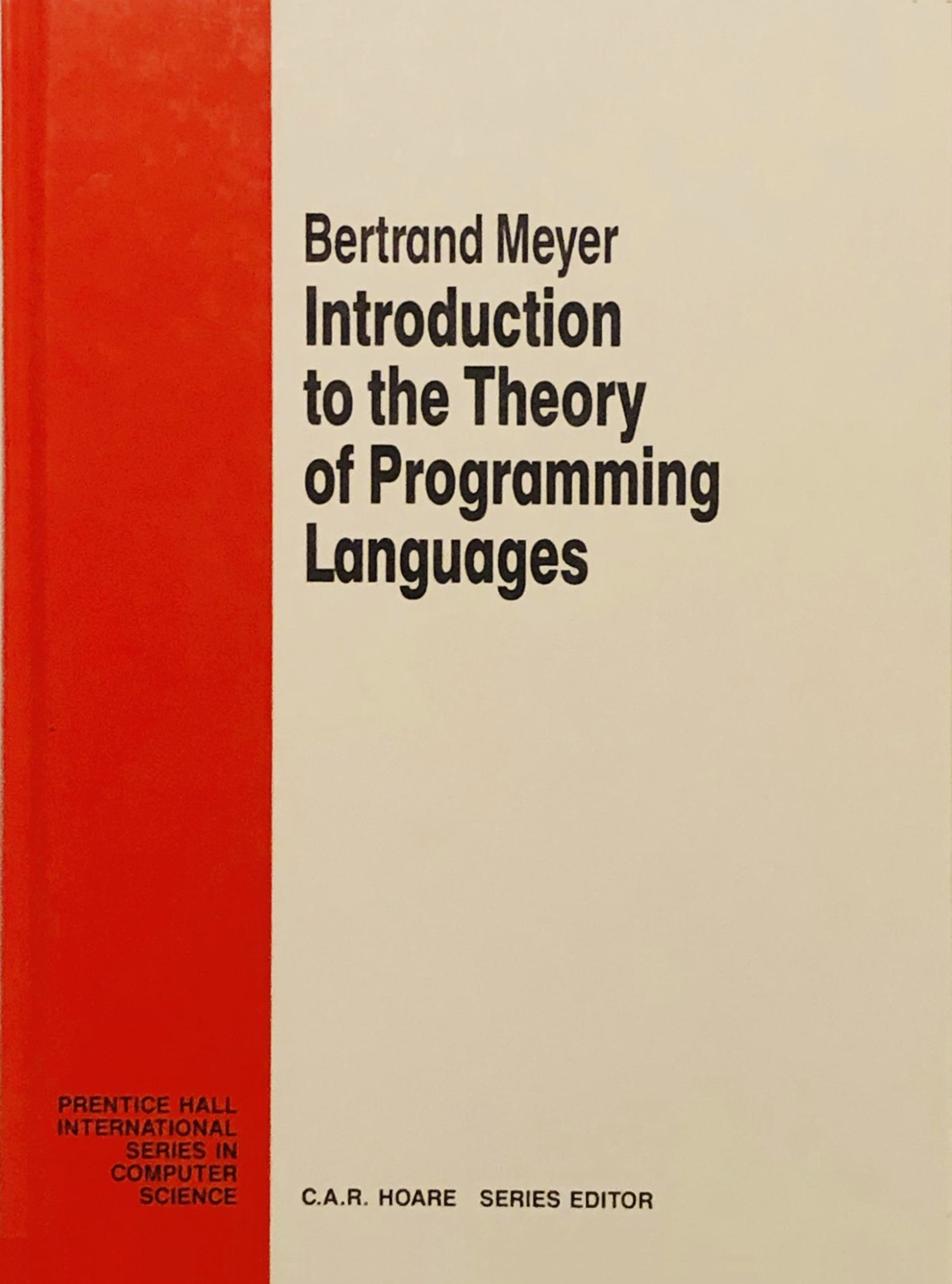 I have released for general usage the chapter on axiomatic semantics of my book Introduction to the Theory of Programming Languages. It’s old but I think it is still a good introduction to the topic. It explains:
I have released for general usage the chapter on axiomatic semantics of my book Introduction to the Theory of Programming Languages. It’s old but I think it is still a good introduction to the topic. It explains:
- The notion of theory (with a nice — I think — example borrowed from an article by Luca Cardelli: axiomatizing types in lambda calculus).
- How to axiomatize a programming language.
- The notion of assertion.
- Hoare-style pre-post semantics, dealing with arrays, loop invariants etc.
- Dijkstra’s calculus of weakest preconditions.
- Non-determinism.
- Dealing with routines and recursion.
- Assertion-guided program construction (in other words, correctness by construction), design heuristics (from material in an early paper at IFIP).
- 26 exercises.
The text can be found at
https://se.inf.ethz.ch/~meyer/publications/theory/09-axiom.pdf
It remains copyrighted but can be used freely. It was available before since I used it for courses on software verification but the link from my publication page was broken. Also, the figures were missing; I added them back.
I thought I only had the original (troff) files, which I have no easy way to process today, but just found PDFs for all the chapters, likely produced a few years ago when I was still able to put together a working troff setup. They are missing the figures, which I have to scan from a printed copy and reinsert. I just did it for the chapter on mathematical notations, chapter 2, which you can find at https://se.inf.ethz.ch/~meyer/publications/theory/02-math.pdf. If there is interest I will release all chapters (with corrections of errata reported by various readers over the years).
The chapters of the book are:
- (Preface)
- Basic concepts
- Mathematical background (available through the link above).
- Syntax (introduces formal techniques for describing syntax, included a simplified BNF).
- Semantics: the main approaches (overview of the techniques described in detail in the following chapters).
- Lambda calculus.
- Denotational semantics: fundamentals.
- Denotational semantics: language features (covers denotational-style specifications of records, arrays, input/output etc.).
- The mathematics of recursion (talks in particular about iterative methods and fixpoints, and the bottom-up interpretation of recursion, based on work by Gérard Berry).
- Axiomatic semantics (available through the link above).
- Complementary semantic definitions (establishing a clear relationship between different specifications, particular axiomatic and denotational).
- Bibliography
Numerous exercises are included. The formal models use throughout a small example language called Graal (for “Great Relief After Ada Lessons”). The emphasis is on understanding programming and programming languages through simple mathematical models.




Both pdf links are broken for me (land to 404 page).
Thank you very much for noticing this! I was playing with my ETH site and made a false move.
Everything should be restored by now.
Note that since I posted the news about the chapters I have actually managed to reconstruct the entire book (with figures and index) as a PDF. I am waiting for the publisher’s permission to make it available. In the meantime, the two chapters previously released are accessible again.